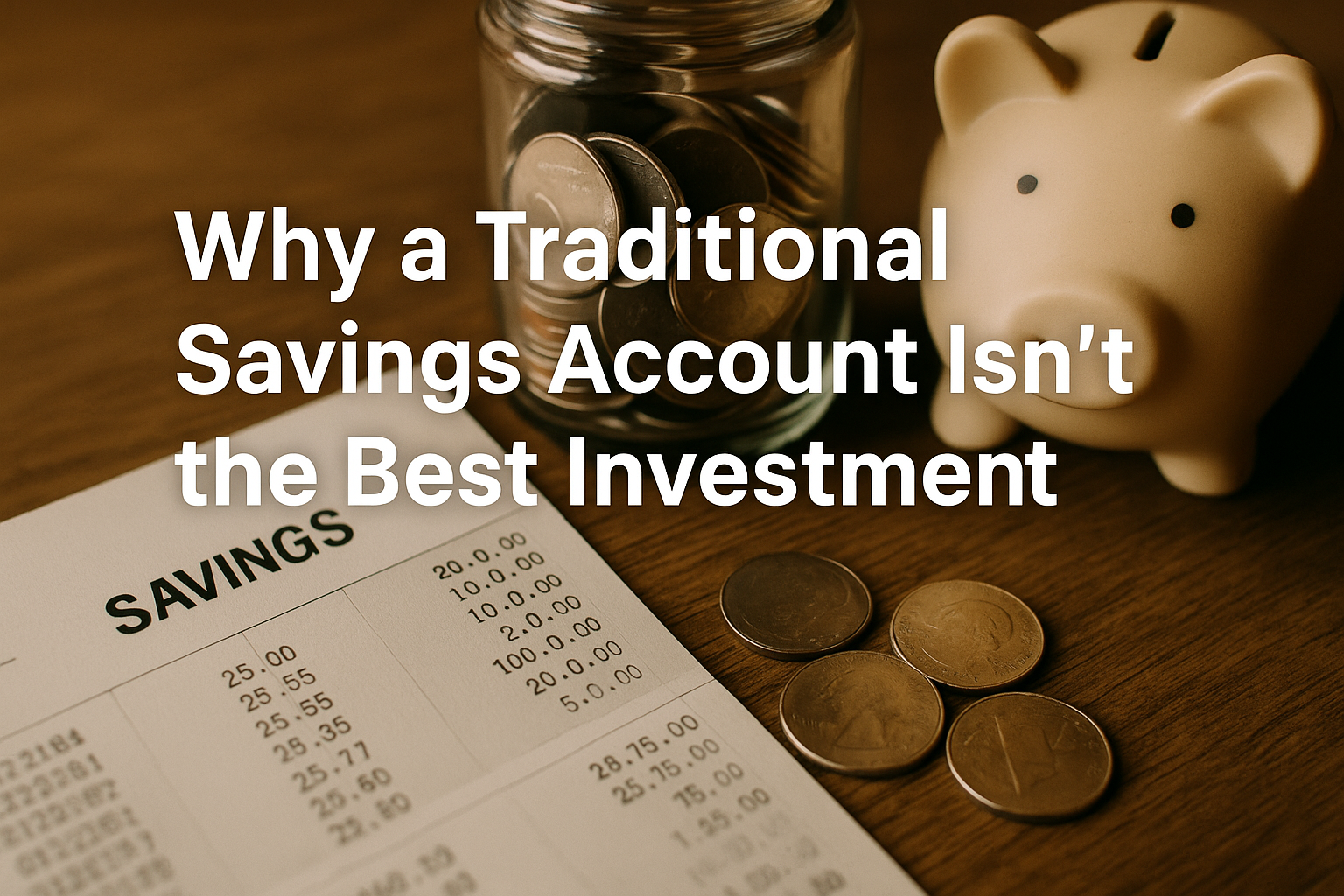For decades, Americans have relied on traditional savings accounts to store their money safely. While they do offer security, low risk, and easy access, they are not ideal for building wealth—especially in today’s inflationary environment.
In this article, we’ll explore why traditional savings accounts fall short as investments and what smarter alternatives you can use to grow your money more effectively.
What Is a Traditional Savings Account?
A traditional savings account is a deposit account offered by banks or credit unions where your money earns interest over time, and you can withdraw it whenever you want.
Key features:
- FDIC-insured (up to $250,000)
- Low interest rates (typically under 0.50% APY)
- Easy access via ATM, online, or in-branch
- Designed for short-term savings and emergencies
While they’re good for holding cash, they’re not built to beat inflation or grow wealth.
The Problem: Low Returns
As of 2024, many traditional savings accounts offer an annual percentage yield (APY) of 0.01% to 0.40%—which is well below the average inflation rate.
Real-life comparison:
- $10,000 in a savings account at 0.03% APY = $3/year in interest
- Inflation at 3% = Your money loses $300/year in purchasing power
This means your money is losing value each year, even though it’s growing in number.
Inflation Is the Silent Killer
The Consumer Price Index (CPI) shows that inflation has hovered between 2% and 8% annually in recent years. That means everything from groceries to rent is getting more expensive.
If your money is growing at 0.03% and prices are rising at 4%, your real return is negative.
Bottom line:
A savings account is safe, but it’s not enough to build or even preserve wealth over time.
When a Traditional Savings Account Does Make Sense
To be fair, savings accounts still serve an important purpose—just not as an investment.
Best uses:
- Emergency fund: 3–6 months of expenses for quick access
- Short-term goals: Saving for a vacation, home repair, or new laptop
- Backup cash reserve: For unexpected expenses
Keep your money liquid, insured, and accessible—but don’t expect it to grow.
Better Alternatives for Growing Your Money
1. High-Yield Savings Accounts
- Offered by online banks
- 10–20x higher interest than traditional banks
- Still FDIC-insured and highly liquid
Example platforms: Ally, Marcus, SoFi, Capital One
2. Certificates of Deposit (CDs)
- Fixed term (6 months to 5 years)
- Higher interest than traditional savings
- Best for money you don’t need to touch
Tip: Use a CD ladder to maintain flexibility while earning more.
3. Series I Savings Bonds (I Bonds)
- Backed by the U.S. Treasury
- Earn interest based on inflation (CPI)
- Great for beating inflation safely
Note: Limited to $10,000/year per person; 1-year lockup period
4. Money Market Accounts
- Higher yield + check-writing or debit access
- Combines features of savings and checking
- Still FDIC-insured
Best for those who want access + better rates.
5. Low-Risk Investment Accounts
Use conservative investment options to preserve capital while beating inflation.
Examples:
- Bond index funds (like BND or AGG)
- Robo-advisors with conservative profiles
- Target-date funds if saving for retirement
While these carry some risk, they offer potential for higher returns that outpace inflation.
6. Retirement Accounts (Long-Term)
If you’re saving for the long haul, investing in a Roth IRA, 401(k), or brokerage account is far more effective.
- Tax-advantaged growth
- Investment options like ETFs and mutual funds
- Compounding returns over decades
When to Make the Switch
Ask yourself:
- Am I using my savings account as a long-term storage place?
- Is my money growing slower than inflation?
- Do I have at least 3–6 months of emergency funds set aside?
If yes, it’s time to move excess cash into better-performing options.
Final Thoughts: Save Smart, Invest Smarter
A traditional savings account is a safe parking spot, not a growth engine. Use it for what it’s good at: quick access and financial safety. But for everything beyond your emergency fund, you need to explore smarter alternatives that grow your money and protect it from inflation.
Start by opening a high-yield savings account, then slowly expand into CDs, I Bonds, or conservative investments based on your timeline and comfort level.
Your money should work as hard as you do—don’t let it sit still.
